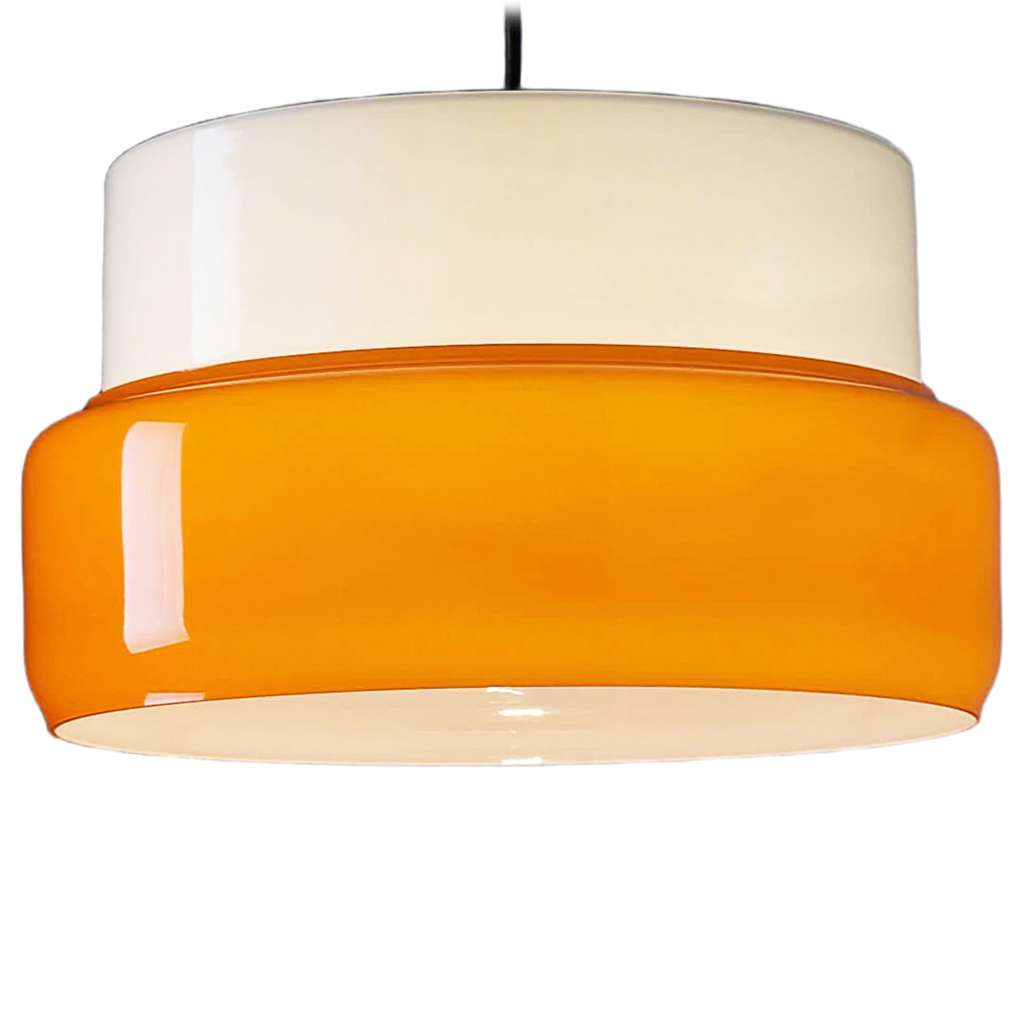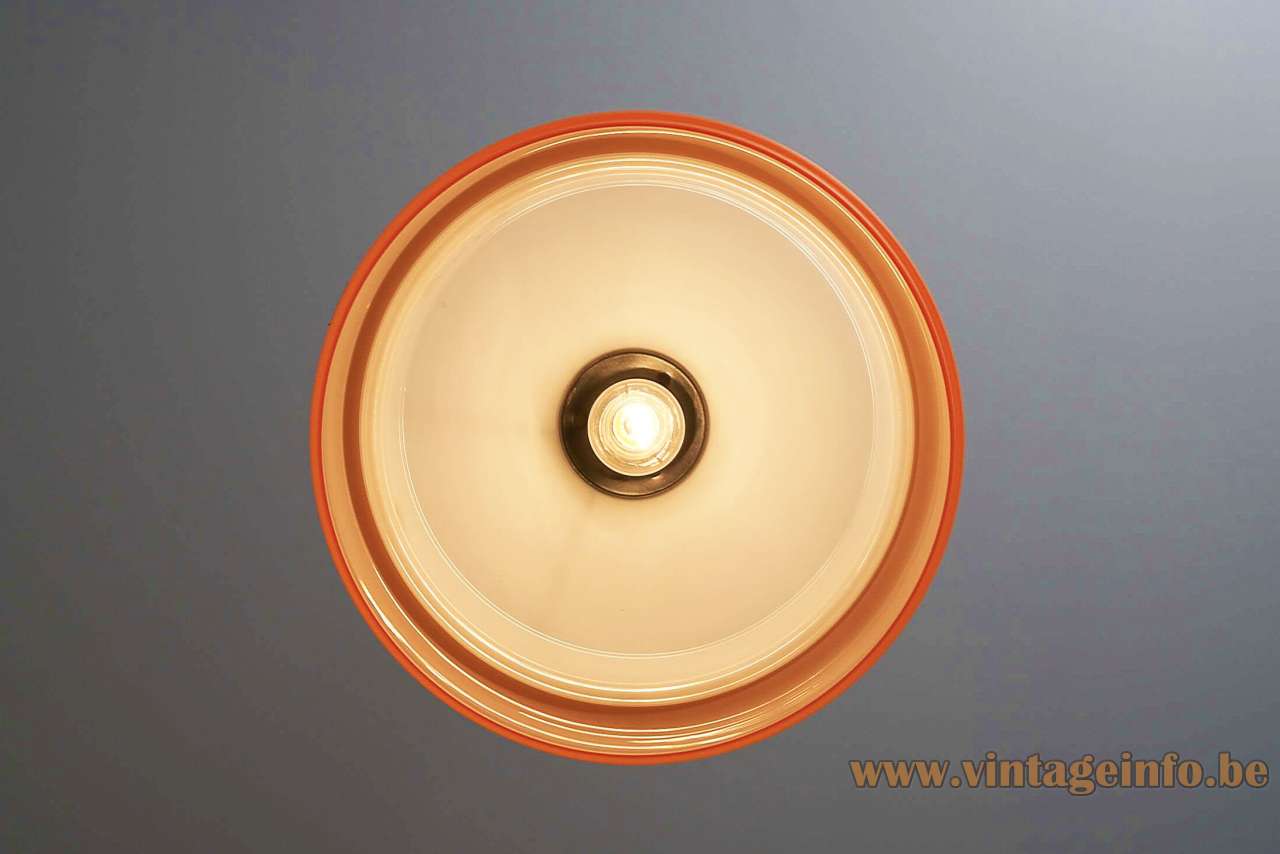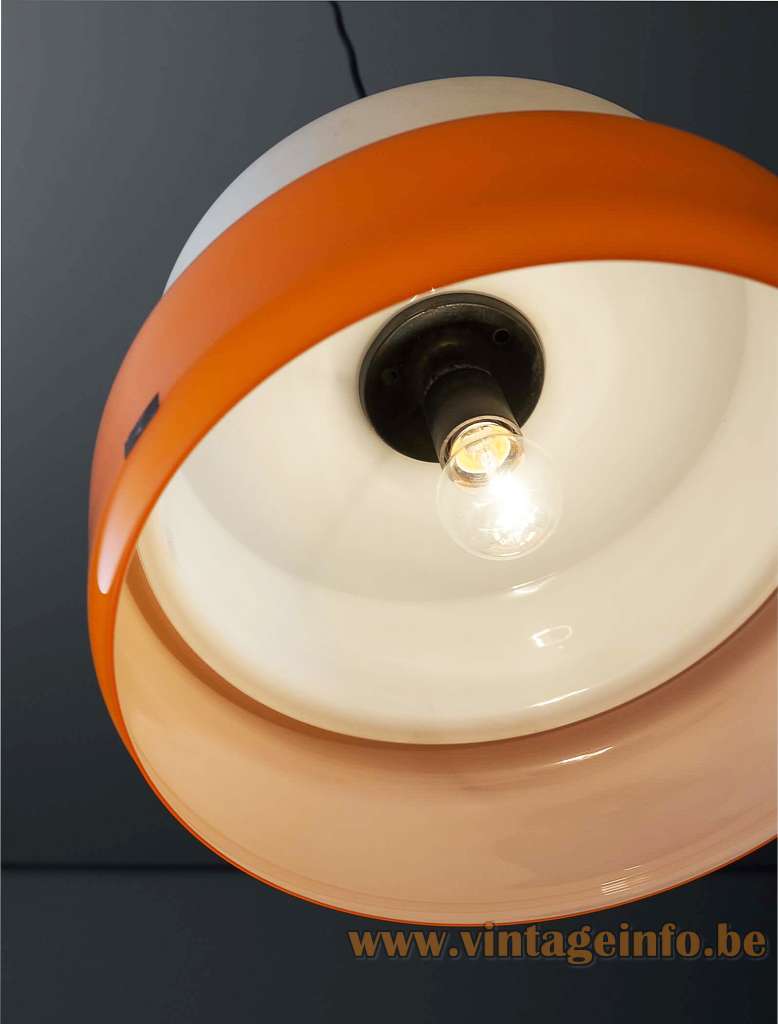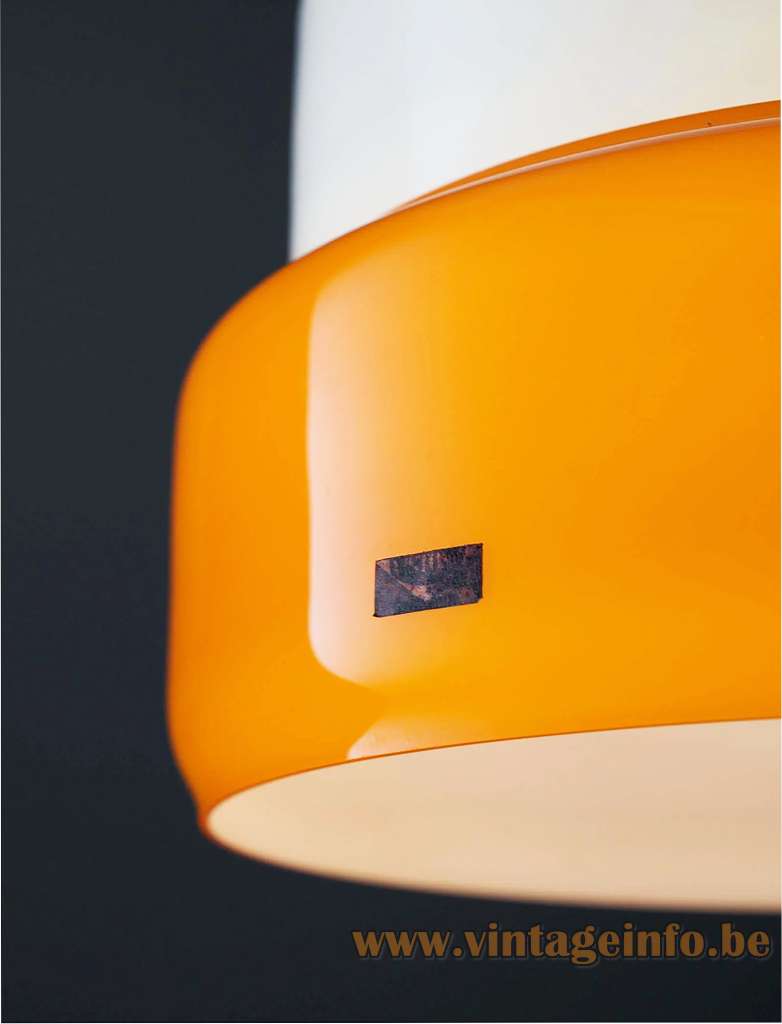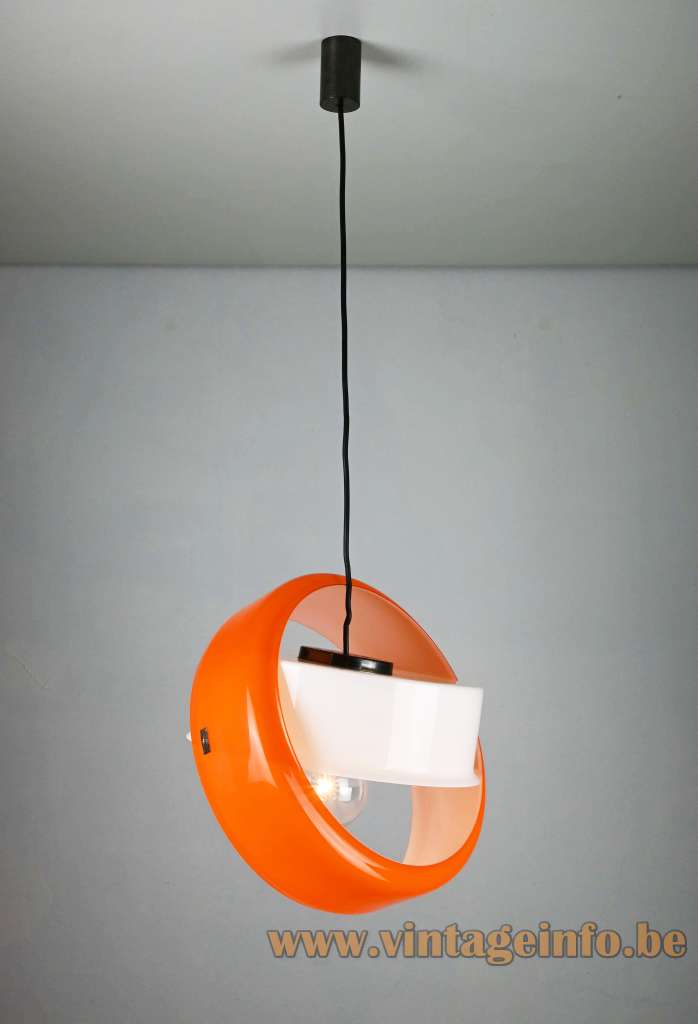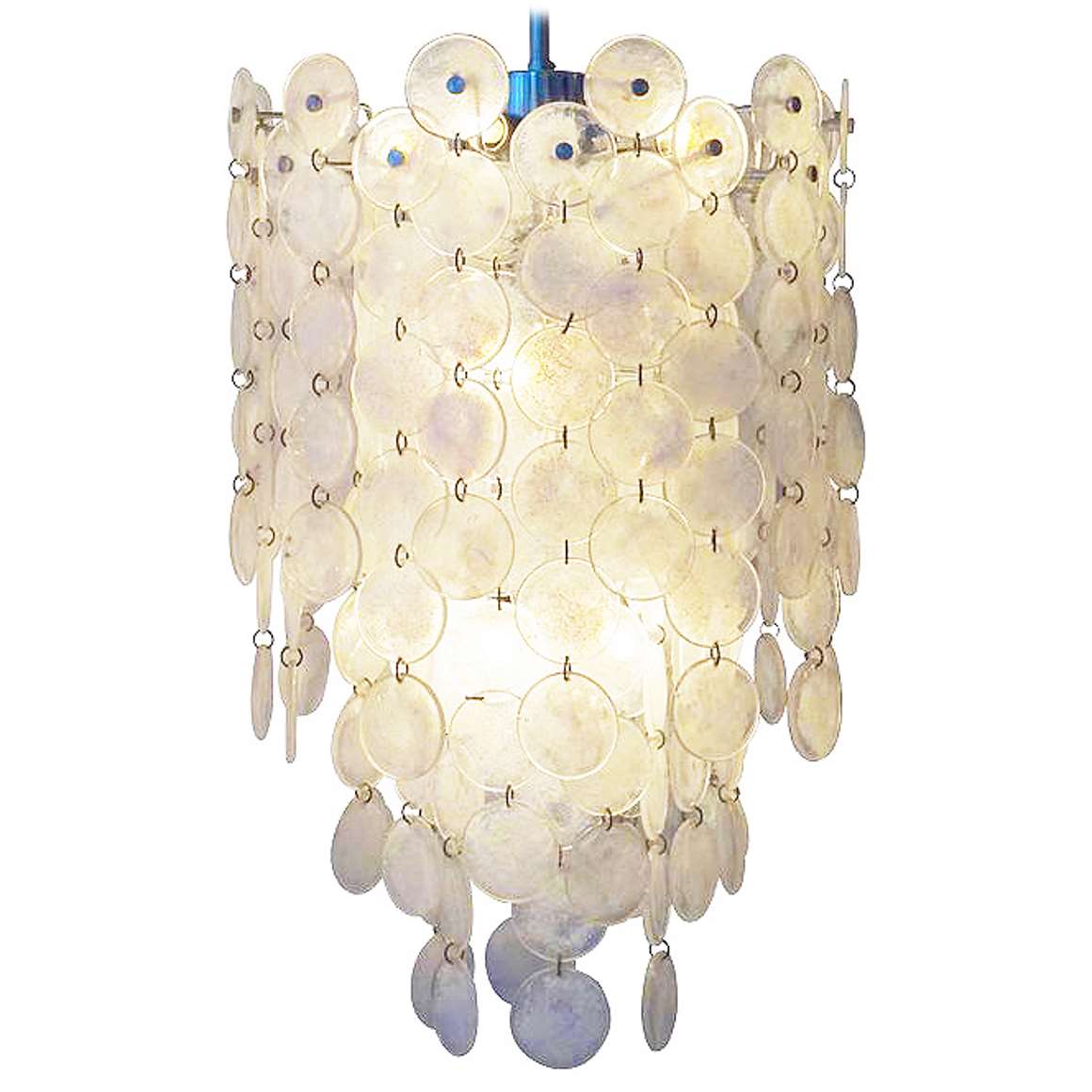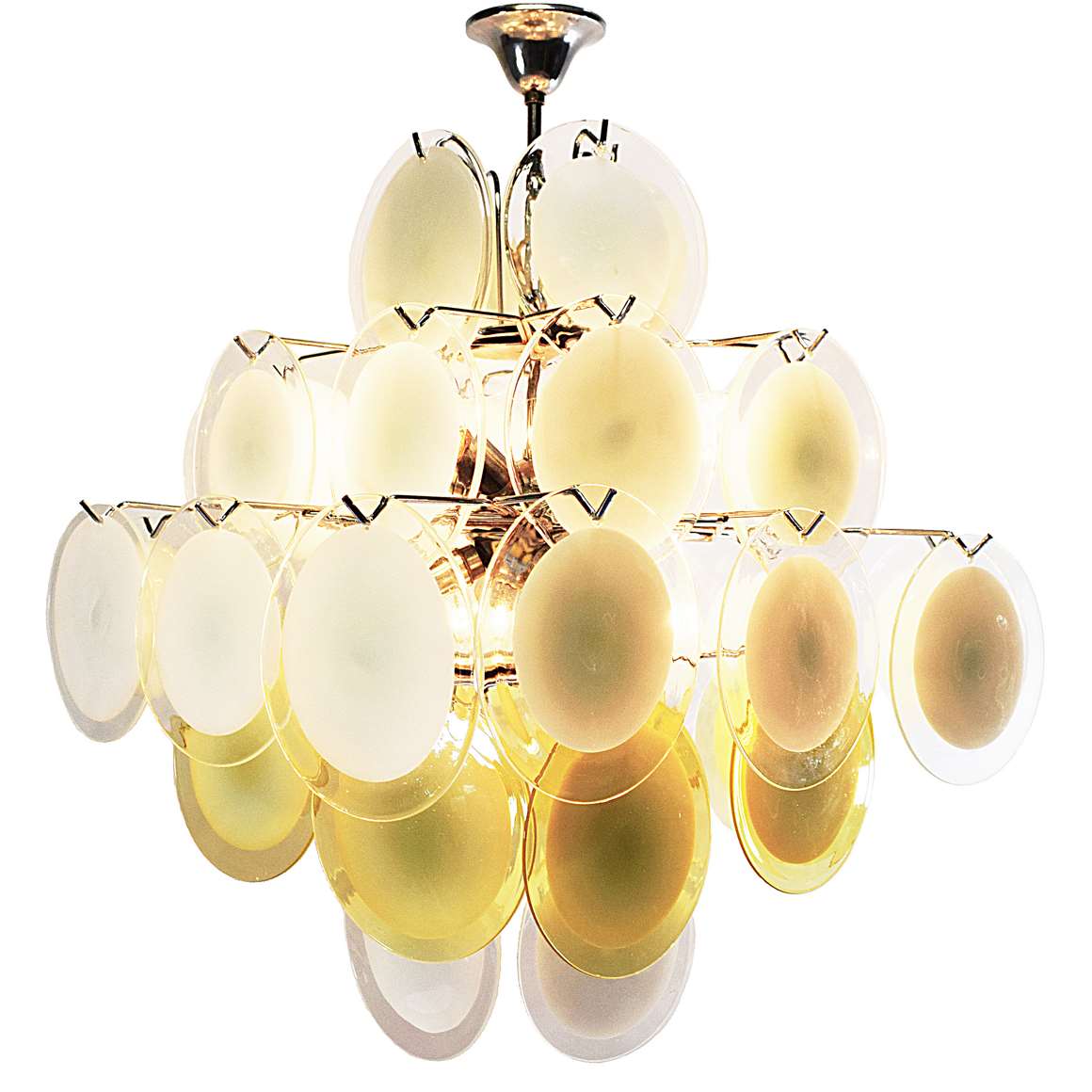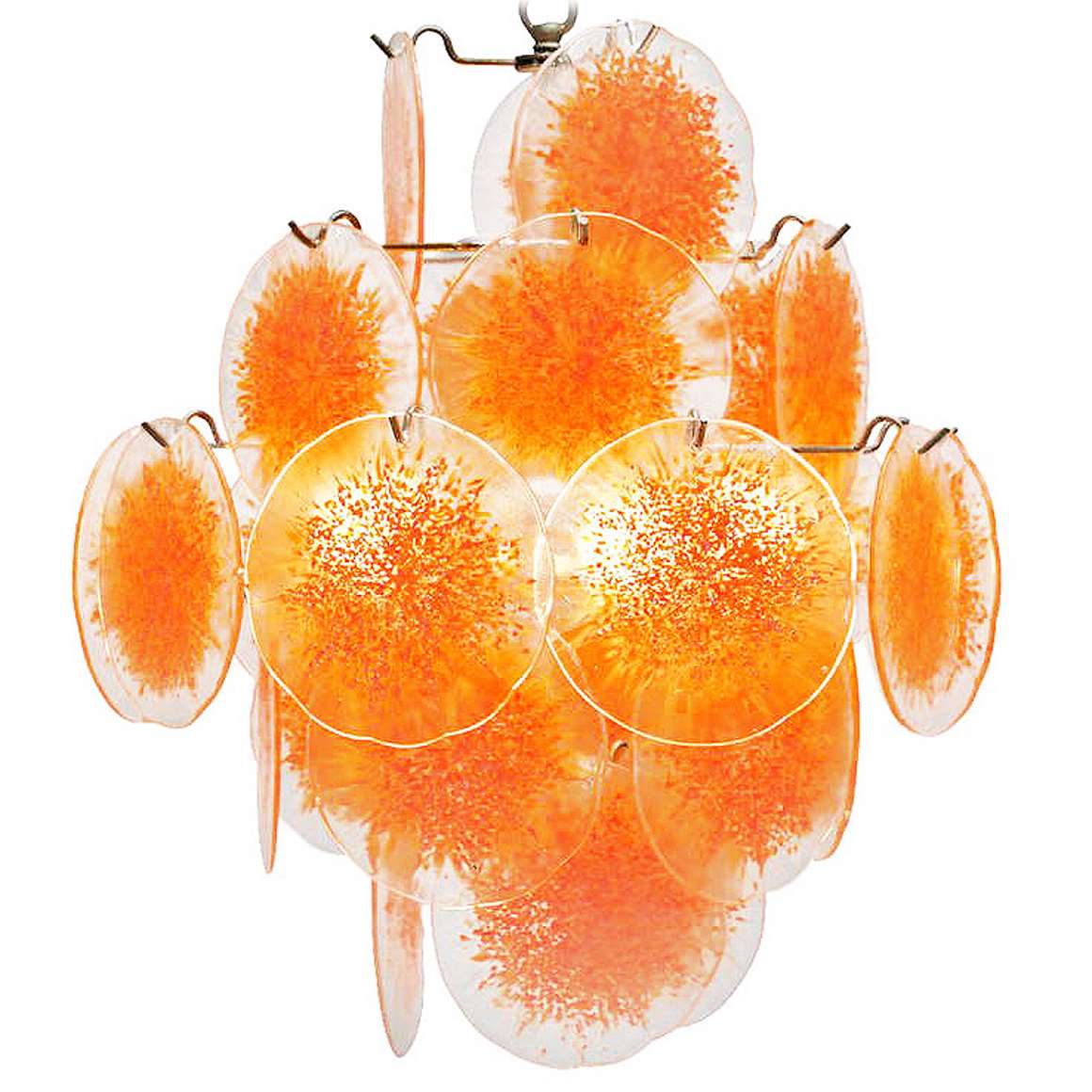Vistosi L53 Pendant Lamp – 1960s Publicity Picture
This Vistosi L53 pendant lamp, together with a glass jar and some desk accessories. The jar is a Luciano Vistosi design, possibly all other things too, including this lamp.
Vistosi L53 Pendant Lamp – 1960s Catalogue Picture
Vistosi catalogues from that period always include a section with photos and a summary, the index. This is always drawn and in gray, as you can see here. Three pendant lamps are shown in this drawing, models: L51, L53, and L54. The top lamp is the well-known “Onion” pendant lamp, model L51, a design by Allesandro Pianon.
Links (external links open in a new window)
Vistosi history – Vistosi website
Many thanks to Max from AfterMidnight for the pictures.
Vistosi L53 Pendant Lamp
Materials: Round hand-blown two-tone glass lampshade made of 2 glass parts in white opal glass and orange glass. Some metal parts Bakelite E27 lamp socket.
Cord: 130 cm / 51.18”
Height: 22 cm / 8.66”
Width: ∅ 36 cm / 14.17”
Electricity: 1 bulb E27, 1 x 100 watt maximum, 110/220 volt.
Any type of light bulb can be used, but preferably a white/opaque bulb.
Period: 1960s, 1970s – Mid-Century Modern.
Designer: To be appraised.
Manufacturer:Vistosi, Murano, Italy.
Other versions: This Vistosi L53 pendant lamp comes in several colours.
Vistosi
Early Origins
The story of Vistosi begins in Murano with the Gazzabin family, who acquired the Al Bastian furnace in 1640. Soon after, the family name “Vistosi” emerged, and by 1791Gio-Batta Vistosi had become Gastaldo dell’Arte, head of the Murano glassmakers’ guild.
A New Beginning after the War
In 1945Guglielmo Vistosi, heir of the Gazzabin family, opened a new furnace in Murano right after World War II, focusing on lighting. Following his premature death, his sons Gino and Luciano, together with their uncle Oreste, laid the foundation of the modern Vistosi company.
The Design Revolution of the 1950s–1980s
The arrival of Venetian architect Alessandro Pianon in 1956 marked a turning point. With Gino and Luciano, he transformed the company into a pioneer of innovation and modern design.
From the late 1950s to the 1980s, Vistosi collaborated with some of the most influential names in design, such as Angelo Mangiarotti, Gae Aulenti, Ettore Sottsass Jr., Massimo Vignelli, Adalberto Dal Lago, Stefania Giannotti, Elleonore Peduzzi Riva, Vico Magistretti, Michele De Lucchi and many others. This golden era produced some of the most iconic Vistosi lighting, now highly sought after by collectors.
The Moretti Era
In 1989 the brand was acquired by Murano businessman Giancarlo Moretti, who had long experience in the glass industry. His son Matteo Moretti later relaunched the company after a short closure in the 1990s, expanding it with the acquisition of brands such as Alox, G2 and Triade.
The last of the founding generation, Luciano Vistosi (1930 – 2010), devoted his later life to research and glass sculpture, leaving a lasting artistic legacy.
Innovation and Recognition since the 2000s
From the early 2000s, Vistosi entered a new phase of experimentation and recognition. Collections such as Rina, Cheope09 and Minigiogali updated traditional techniques for contemporary forms. Later came Giogali 3D, a new interpretation of the famous chandelier, and Diadema, created with a unique patented rod process. Award-winning designs like Futura, Nodo, Trepai, Jube, Sata, Stone and Armonia confirmed Vistosi ’s relevance in international design.
In 2019 the company celebrated the 50th anniversary of Giogali, and in the following years it was recognised among the 100 Eccellenze Italiane, partnered with the Venice Glass Week, and launched a Virtual Museum, e-commerce platform and LED collections.
Designers of the Contemporary Period
Under the Moretti family, Vistosi worked with a wide range of contemporary designers, including Chiaramonte & Marin, Mauro Olivieri, Barbara Maggiolo, Paolo Crepax, Monica Agnolazza, Silvio Zanon, Giovanni Barbato, Matthias Hickl, Roberto Maci, Alberto Nason (son of Carlo), Romani Saccani Architetti Associati, Gregorio Spini, Emmanuel Babled, Oriano Favaretto, Marco Acerbis, Castaglia Associati, Pio e Tito Toso, Renato Toso, and Noti Massari & Associates.
A Defining Design
A remarkable fact in Vistosi ’s history concerns the famous Giogali chandelier series. Although countless catalogues, books and online sources credit the design to Angelo Mangiarotti, it was in fact created by Gino Vistosi himself – according to Gino Vistosi’s daughter.
Vistosi L53 Pendant Lamp – 1965 Lilux Catalogue Picture
This Vistosi L53 pendant lamp, together with the L51 “Onion” pendant lamp, a design by Allesandro Pianon. The L71 is the big version of the L51.
